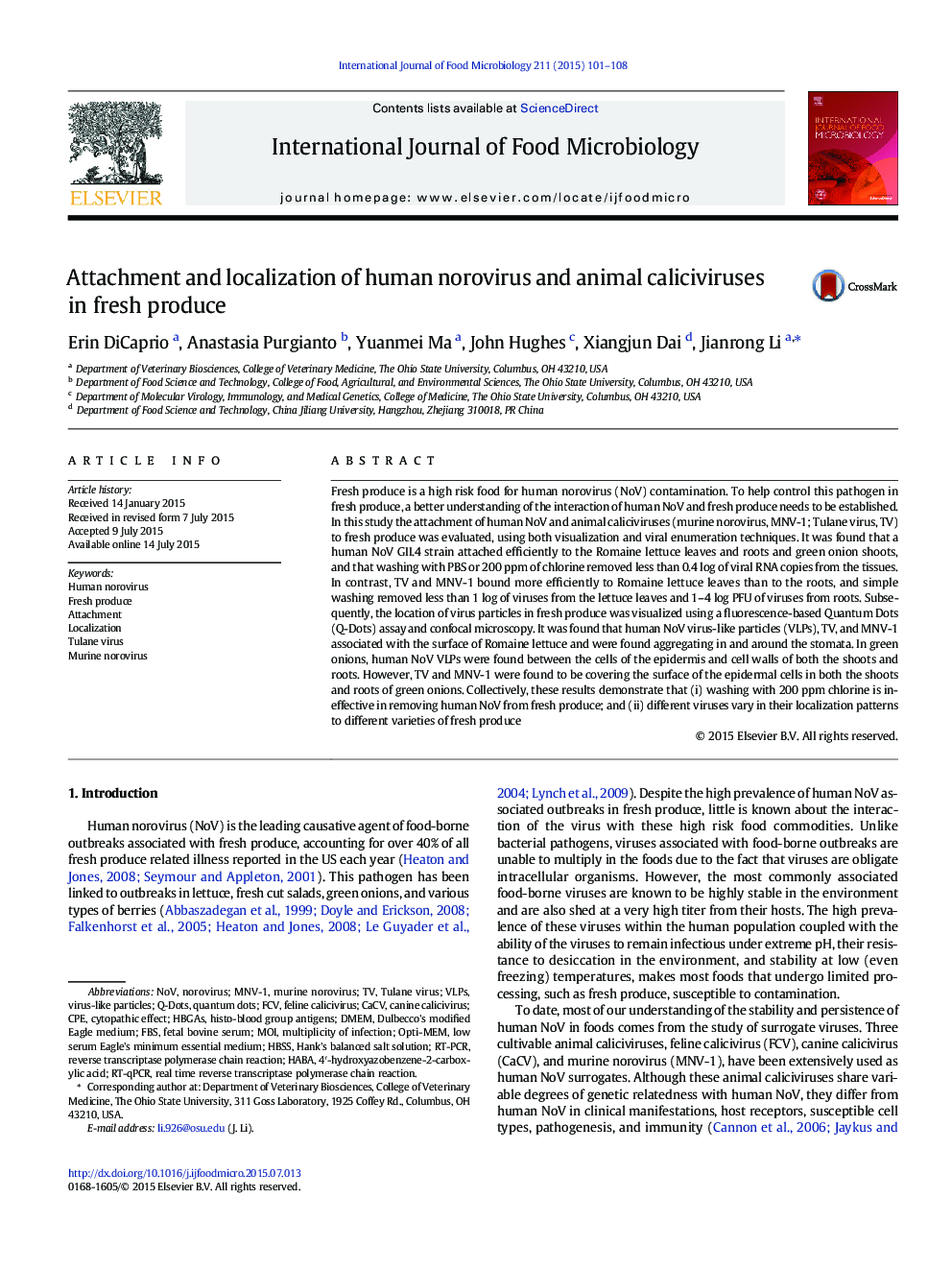| کد مقاله | کد نشریه | سال انتشار | مقاله انگلیسی | نسخه تمام متن |
|---|---|---|---|---|
| 4366517 | 1616572 | 2015 | 8 صفحه PDF | دانلود رایگان |
• Washing human norovirus contaminated fresh produce removed only 1 log of viral RNA.
• Viral surrogates more easily removed from fresh produce compared to human norovirus
• Human norovirus surrogates aggregated in and around the stomata of Romaine lettuce.
• Human norovirus VLPs localized between the cell wall of green onion epidermal cells.
• TV and MNV-1 covered the surface of green onion epidermal cells.
Fresh produce is a high risk food for human norovirus (NoV) contamination. To help control this pathogen in fresh produce, a better understanding of the interaction of human NoV and fresh produce needs to be established. In this study the attachment of human NoV and animal caliciviruses (murine norovirus, MNV-1; Tulane virus, TV) to fresh produce was evaluated, using both visualization and viral enumeration techniques. It was found that a human NoV GII.4 strain attached efficiently to the Romaine lettuce leaves and roots and green onion shoots, and that washing with PBS or 200 ppm of chlorine removed less than 0.4 log of viral RNA copies from the tissues. In contrast, TV and MNV-1 bound more efficiently to Romaine lettuce leaves than to the roots, and simple washing removed less than 1 log of viruses from the lettuce leaves and 1–4 log PFU of viruses from roots. Subsequently, the location of virus particles in fresh produce was visualized using a fluorescence-based Quantum Dots (Q-Dots) assay and confocal microscopy. It was found that human NoV virus-like particles (VLPs), TV, and MNV-1 associated with the surface of Romaine lettuce and were found aggregating in and around the stomata. In green onions, human NoV VLPs were found between the cells of the epidermis and cell walls of both the shoots and roots. However, TV and MNV-1 were found to be covering the surface of the epidermal cells in both the shoots and roots of green onions. Collectively, these results demonstrate that (i) washing with 200 ppm chlorine is ineffective in removing human NoV from fresh produce; and (ii) different viruses vary in their localization patterns to different varieties of fresh produce
Journal: International Journal of Food Microbiology - Volume 211, 15 October 2015, Pages 101–108
